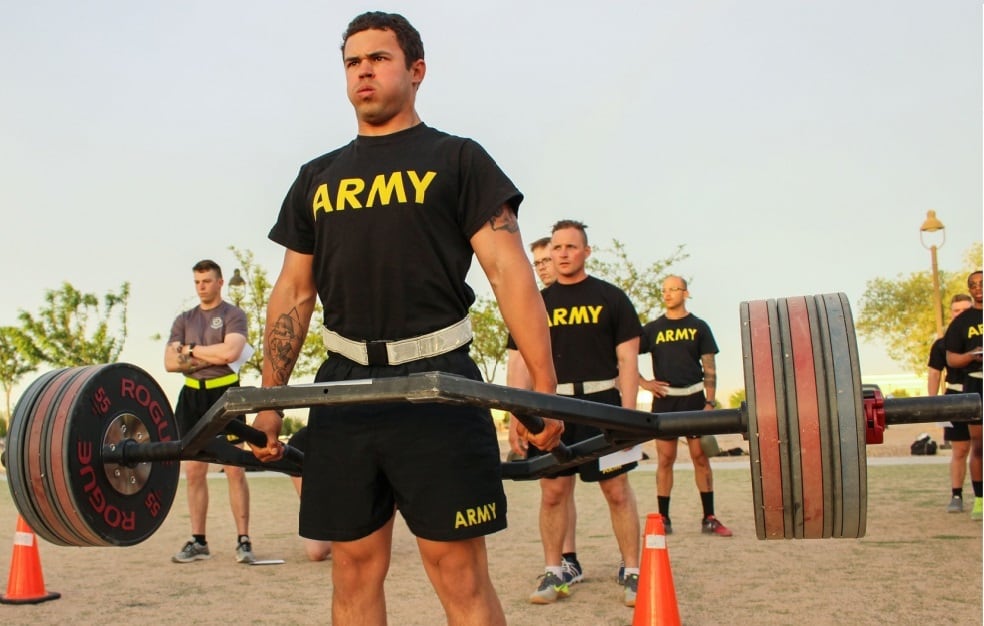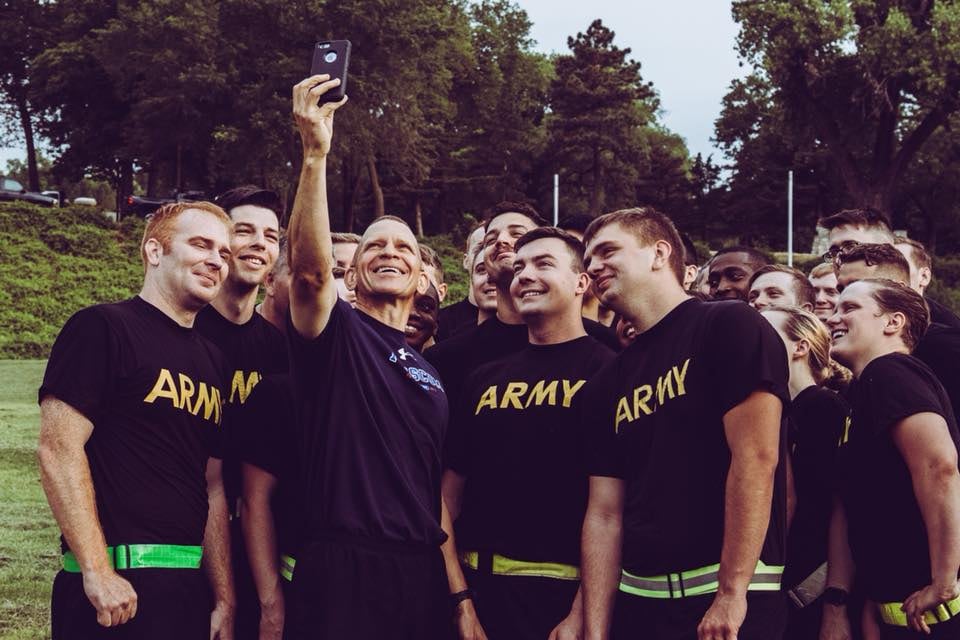The Army’s senior enlisted leader tweeted out his Army Combat Fitness Test scores Sunday morning.
Sergeant Major of the Army Michael A. Grinston said on Twitter that two years ago he could only reach the minimums on the deadlift portion of the test.
That would have put him in the ballpark of 200 pounds. On his latest testing, Grinston hit 300 pounds.
The improvement highlights how important the diagnostic phase of the ACFT roll-out will be for soldiers across the force, according to the Army’s senior enlisted soldier.
Over the course of the next year, all soldiers in the active-duty Army will take two ACFT diagnostic tests, while soldiers in the Guard and Reserve components will take one diagnostic test.
“Two years ago, I didn’t do deadlifts,” Grinston previously told Army Times in an interview. "I said, at the time, ‘I’m 49, turning 50. How is this going to work?’”
“I really thought that either my back or something’s going to hurt when I start lifting weights off the ground,” he said. “And what I actually found was the exact opposite. I became much stronger, and I felt better, not worse, that I was doing deadlifts. The posterior of my body got trained ... also I’m working more on my back. ... Actually, I felt like I had less back pain, I felt stronger.”
Grinston said he started small, lifting about 100 pounds, before increasing to 135 pounds and up.
The sprint-drag-carry event was also a “gasser” for Grinston because he was used to running at pace for two miles. But the new sprint event better mirrors the sudden bursts of speed required during combat.
“Doing those short bursts, I think, was a little different. And it just took me a little bit of time to train,” he added. “You can do it, and I’ve done it at over 50 [years old]."
The leg tuck has been one event that concerns many soldiers.
A leaked document posted on social media last month showed that many of the ACFT failures from 11 battalions tested over the last year were attributed to the leg tuck event.
RELATED

Grinston maxed out that event on the Sunday test.
“I think a lot of people underestimated how difficult that [leg tuck] is, because it’s more like a pull-up and works your abdominal muscles,” he explained.
The new ACFT is “finding some flaws in our game physically,” Grinston said. But that’s a good thing over the long run.
“This is something you need to be able to do, to be able to pull yourself," he added. "I can’t remember going to combat where I didn’t have to, all of a sudden ... pull myself up and get over something, and that takes a strong core, and I think that’s something that when you really need to work on.”
Kyle Rempfer was an editor and reporter who has covered combat operations, criminal cases, foreign military assistance and training accidents. Before entering journalism, Kyle served in U.S. Air Force Special Tactics and deployed in 2014 to Paktika Province, Afghanistan, and Baghdad, Iraq.





